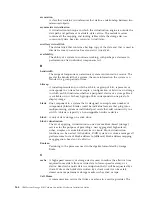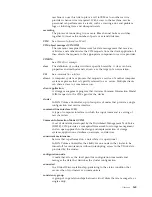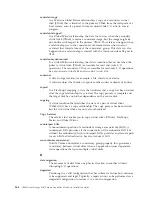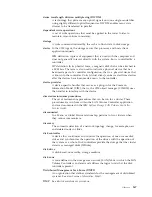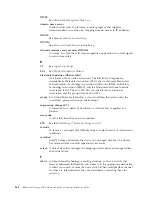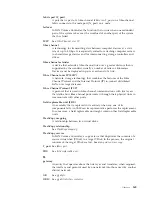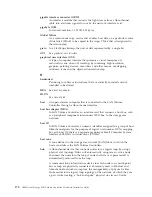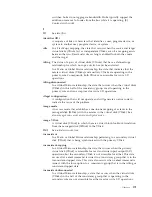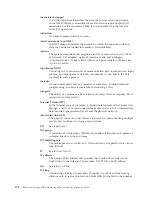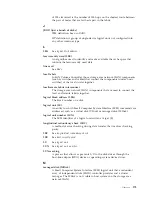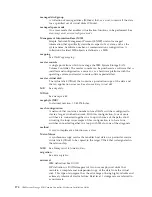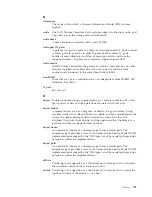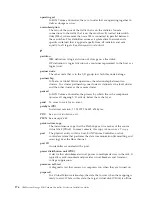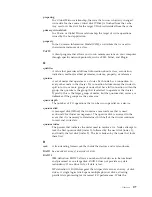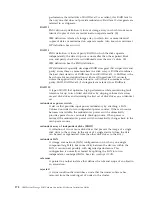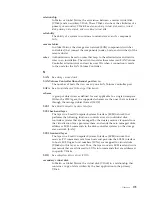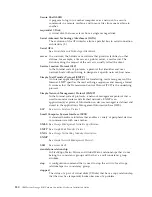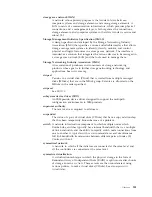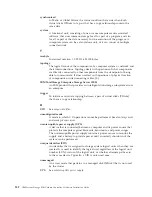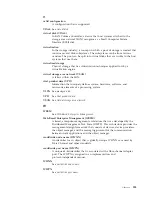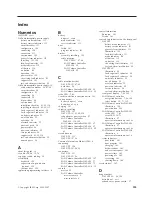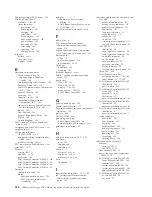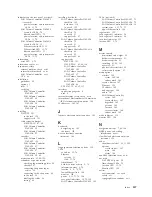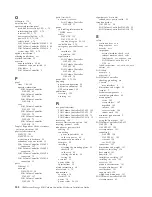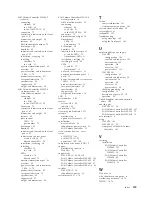
performance
characteristics
of
RAID
level
0
is
excellent,
this
RAID
level
is
the
only
one
that
does
not
provide
redundancy.
Raid
level
0
storagesets
are
referred
to
as
stripesets.
RAID
1
SNIA
dictionary
definition:
A
form
of
storage
array
in
which
two
or
more
identical
copies
of
data
are
maintained
on
separate
media.
(S)
IBM
definition:
A
form
of
storage
array
in
which
two
or
more
identical
copies
of
data
are
maintained
on
separate
media.
Also
known
as
mirrorset.
HP
definition:
See
mirrorset
.
RAID
5
SNIA
definition:
A
form
of
parity
RAID
in
which
the
disks
operate
independently,
the
data
strip
size
is
no
smaller
than
the
exported
block
size,
and
parity
check
data
is
distributed
across
the
array’s
disks.
(S)
IBM
definition:
See
the
SNIA
definition.
HP
definition:
A
specially
developed
RAID
storageset
that
stripes
data
and
parity
across
three
or
more
members
in
a
disk
array.
A
RAIDset
combines
the
best
characteristics
of
RAID
level
3
and
RAID
level
5.
A
RAIDset
is
the
best
choice
for
most
applications
with
small
to
medium
I/O
requests,
unless
the
application
is
write
intensive.
A
RAIDset
is
sometimes
called
parity
RAID.
RAID
level
3/5
storagesets
are
referred
to
as
RAIDsets.
RAID
10
A
type
of
RAID
that
optimizes
high
performance
while
maintaining
fault
tolerance
for
up
to
two
failed
disk
drives
by
striping
volume
data
across
several
disk
drives
and
mirroring
the
first
set
of
disk
drives
on
an
identical
set.
redundant
ac
power
switch
A
device
that
provides
input
power
redundancy
by
attaching
a
SAN
Volume
Controller
to
two
independent
power
sources.
If
the
main
source
becomes
unavailable,
the
redundant
ac
power
switch
automatically
provides
power
from
a
secondary
(backup)
source.
When
power
is
restored,
the
redundant
ac
power
switch
automatically
changes
back
to
the
main
power
source.
redundant
array
of
independent
disks
(RAID)
A
collection
of
two
or
more
disk
drives
that
present
the
image
of
a
single
disk
drive
to
the
system.
In
the
event
of
a
single
device
failure,
the
data
can
be
read
or
regenerated
from
the
other
disk
drives
in
the
array.
redundant
SAN
A
storage
area
network
(SAN)
configuration
in
which
any
one
single
component
might
fail,
but
connectivity
between
the
devices
within
the
SAN
is
maintained,
possibly
with
degraded
performance.
This
configuration
is
normally
achieved
by
splitting
the
SAN
into
two,
independent,
counterpart
SANs.
See
also
counterpart
SAN.
reference
A
pointer
to
another
instance
that
defines
the
role
and
scope
of
an
object
in
an
association.
rejected
A
status
condition
that
describes
a
node
that
the
cluster
software
has
removed
from
the
working
set
of
nodes
in
the
cluster.
178
IBM
System
Storage
SAN
Volume
Controller:
Hardware
Installation
Guide
Summary of Contents for 2145UPS-1U
Page 2: ......
Page 8: ...vi IBM System Storage SAN Volume Controller Hardware Installation Guide...
Page 56: ...18 IBM System Storage SAN Volume Controller Hardware Installation Guide...
Page 72: ...34 IBM System Storage SAN Volume Controller Hardware Installation Guide...
Page 102: ...64 IBM System Storage SAN Volume Controller Hardware Installation Guide...
Page 138: ...100 IBM System Storage SAN Volume Controller Hardware Installation Guide...
Page 190: ...152 IBM System Storage SAN Volume Controller Hardware Installation Guide...
Page 192: ...154 IBM System Storage SAN Volume Controller Hardware Installation Guide...
Page 200: ...162 IBM System Storage SAN Volume Controller Hardware Installation Guide...
Page 228: ...190 IBM System Storage SAN Volume Controller Hardware Installation Guide...
Page 231: ......
Page 232: ...Part Number 31P1046 Printed in USA GC27 2132 01 1P P N 31P1046...

